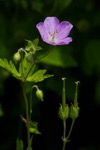Notice (8): Undefined index: geoplugin_countryCode [APP/Controller/AppController.php, line 94]Code Context$Country_code = '';if($ip_data && $ip_data['geoplugin_countryCode'] != null) {$Country_code = $ip_data['geoplugin_countryCode'];$client = null $forward = null $remote = '216.73.216.189' $ip = '216.73.216.189' $ch = unknown $ip_data_in = '{ "geoplugin_status":429, "geoplugin_message": "Blacklisted due to sending too many requests to geoplugin.net. Consider whitelisting your IP or domain", "geoplugin_url": "https://www.geoplugin.com/premium/" } ' $ip_data = [ 'geoplugin_status' => '429', 'geoplugin_message' => 'Blacklisted due to sending too many requests to geoplugin.net. Consider whitelisting your IP or domain', 'geoplugin_url' => 'https://www.geoplugin.com/premium/' ] $Country_code = ''App\Controller\AppController::initialize() - APP/Controller/AppController.php, line 94 App\Controller\ProductsController::initialize() - APP/Controller/ProductsController.php, line 31 Cake\Controller\Controller::__construct() - CORE/src/Controller/Controller.php, line 273 ReflectionClass::newInstance() - [internal], line ?? Cake\Http\ControllerFactory::create() - CORE/src/Http/ControllerFactory.php, line 47 Cake\Http\ActionDispatcher::dispatch() - CORE/src/Http/ActionDispatcher.php, line 91 Cake\Http\BaseApplication::__invoke() - CORE/src/Http/BaseApplication.php, line 235 Cake\Http\Runner::__invoke() - CORE/src/Http/Runner.php, line 65 Cake\Http\Runner::__invoke() - CORE/src/Http/Runner.php, line 65 Cake\Http\Middleware\CsrfProtectionMiddleware::__invoke() - CORE/src/Http/Middleware/CsrfProtectionMiddleware.php, line 108 Cake\Http\Runner::__invoke() - CORE/src/Http/Runner.php, line 65 Cake\Http\Runner::run() - CORE/src/Http/Runner.php, line 51 Cake\Routing\Middleware\RoutingMiddleware::__invoke() - CORE/src/Routing/Middleware/RoutingMiddleware.php, line 168 Cake\Http\Runner::__invoke() - CORE/src/Http/Runner.php, line 65 Cake\Routing\Middleware\AssetMiddleware::__invoke() - CORE/src/Routing/Middleware/AssetMiddleware.php, line 88 Cake\Http\Runner::__invoke() - CORE/src/Http/Runner.php, line 65 Cake\Error\Middleware\ErrorHandlerMiddleware::__invoke() - CORE/src/Error/Middleware/ErrorHandlerMiddleware.php, line 96
| Scientific: | Geranium maculatum |
|---|---|
| Other: | Geranium, Cranesbill |
| Family: | Geraniaceae |
Cranesbill, also called spotted-geranium, grows in the forests of eastern North America. The First Nations People used this herb has a powerful astringent. The root contains an abundance of tannins. In general, astringent herbs form cross-linking with proteins to " tan " the injured tissues and produce a " second skin " that protects, hastens wound healing and prevents infection. Cranesbill is used whenever astringents are indicated to stop bleeding, heal wounds and reduce mucous discharges.
Historically cranesbill was used for dysentery, diarrhea, and infantile cholera. Tannins have an antisecretory effect by inhibiting proteins (chlorine transporters CaCC) involved in diarrhea. Also, they reduce stomach acid by inactivating transporters (H/K-ATPase) involved in making HCl. Research on cranesbill is almost non-existent but based on tannin research, cranesbills traditional indications are plausible.
Gastrointestinal
• over-relaxed or inflamed mucous membranes with bleeding:
• infectious diarrhea (dysentery)
• inflammatory bowel disease (IBD)
• apthous ulcers
• gastric ulcers
• prolapsed rectum (enema or suppository)
• rectal bleeding
• proctitis (topical application)
• hemorrhoids (topical application)
• peptic ulcer
Reproductive
• excessive menstrual bleeding and/or discharge:
- menorrhagia
- metrorrhagia
- leukorrhea (vaginal discharge )
• Astringent
• Hemostatic
• Antiinflammatory
• Gastroprotective
• Tannins
• Tincture: (1:5 in 40% EtOH): 2-4 ml tid
• Liquid extract: (1:1 in 70% EtOH): 0.5-1 ml tid
• Decoction: (dried rhizome): 1-2 tsp of root tid
• Generally considered safe when used as indicated.
- Iron supplements • may reduce the absorption of non-heme iron. Take iron supplements a few hours apart.
Barnes J, Anderson LA, Phillipson JD. Herbal Medicines, 3rd ed. London: Pharmaceutical Press, 2007.
Bone K. Principles and Practice of Phytotherapy. Edinburgh: Churchill Livingstone, 2000.
Bone K. A Clinical Guide to Blending Liquid Herbs: Herbal Formulations for the Individual Patient. St Louis, MO: Churchill Livingstone, 2003.
Brinker F. The Toxicology of Botanical Medicines, 3rd ed. Sandy, Oregon: Eclectic Medical Publications, 2000.
Felter HW, Lloyd JU. King's American Dispensatory. 1898. http://www.ibiblio.org/herbmed/eclectic/kings/main.html. Accessed: August 19, 2006.
Hoffman D. Medical Herbalism. Rochester, Vermont: Healing Arts Press, 2003.
Weiss RF. Herbal Medicine. Beaconsfield, England: Beaconsfield Publishers Ltd, 1988.
Williamson EM, ed. Major Herbs of Ayurveda. Edinburgh: Churchill Livingstone, 2002
Disclaimer: This content is subject to change. The information is intended to inform and educate; it does not replace the medical evaluation, advice, diagnosis or treatment by a healthcare professional. www.nhpassist.com © 2014 NDAssist Inc. and/or its affiliates. All rights reserved.

|
Geranium, Cranesbill
SummaryCranesbill, also called spotted-geranium, grows in the forests of eastern North America. The First Nations People used this herb has a powerful astringent. The root contains an abundance of tannins. In general, astringent herbs form cross-linking with proteins to " tan " the injured tissues and produce a " second skin " that protects, hastens wound healing and prevents infection. Cranesbill is used whenever astringents are indicated to stop bleeding, heal wounds and reduce mucous discharges. IndicationsSign in requiredActionsSign in requiredConstituentsSign in requiredPosologySign in requiredSafetySign in requiredInteractionsSign in requiredReferencesSign in required |
|---|